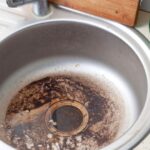School Flooding and Water Leakage – What About the Children’s Health?
Around the world our younger generation spend on average, between 500 and 700 hours per year in school. If the environment they’re in is hazardous and unsafe, that’s a long time for a child to spend exposed to the risk of illness.
While steps can be taken to reduce the amount of germs that spread through schools, sometimes the cause may not be realised or expected.
Schools premises are at a constant threat of leaks and floods, whether it’s due to adverse weather, a burst pipe or a leaking roof. It may affect one classroom or the whole site and if the reason is flooding, the water could be dirty and dangerous, ‘black water’ that may contain faeces, animal remains or chemicals.
The immediate steps which should be taken after school flooding include:
- Keeping children away from affected areas and if required evacuate the school.
- Be aware of resultant damage to buildings and classrooms such as broken floorboards, cracked tiles and protruding nails.
- Toys and school equipment should be cleaned thoroughly and, if you’re not sure it’s safe, bin it and replace it!
- Prevent access to any exposed areas such as playgrounds or fields until everything has been thoroughly cleaned down.
- Consider the facilities at the school – is the water supply safe if you’ve been flooded, can the children drink from the tap or use the toilets.
A child’s health can be at risk following a flood at their school and not just during the event and immediate aftermath. Germs and bacteria from dirty water can seep into wood, furniture, equipment and walls; in fact anywhere it can gain access and can remain there unnoticed for long periods. Any damp or wet patches not properly resolved and dried out can subsequently cause mould to grow, which gives off harmful airborne pathogens known as spores. Children in particular are at risk of infection and breathing related problems from spores and some species can be particularly harmful.
Less serious than floods, water leaks from any pipework can contaminate walls, floors or furniture, and while it may seem a small scale problem, the resulting damp and possible mould is still exposing children to risk of illness and infection.
Whilst flood water cannot always be detected, you can put in place systems that will assist in detecting leaking water within the school’s framework before it becomes a serious problem. Take every step to keep your school and the children in it as safe as possible.
To create a safer learning environment for children, installation of a leak detection system which uses modern innovative new technology for school flooding prevention can be done as well as performing annual building leak inspections. The leak detection system can be easily monitored by your maintenance.
For information on how we can help if you suspect a leak and prevent school flooding, consult LeakDTech’s professionals now!
Contact Us For More Information



